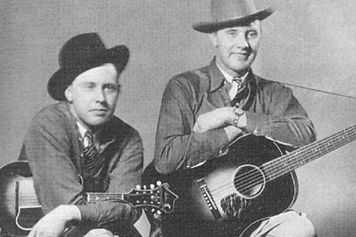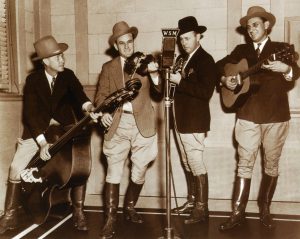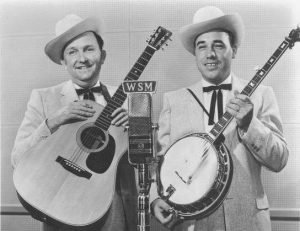Purposes of B.A.N.D.
The reasons why we have banded together.
The Bluegrass Association of North Dakota (B.A.N.D.) was formed to preserve and promote bluegrass music in North Dakota, USA. It provides the following services to its members:
• The planning and implementation of bluegrass playing and listening opportunities in the state and region.
• Learning opportunities for aspiring and established musicians related to bluegrass instrumentation and bluegrass singing.
• Grant writing and event support for funding concerts and workshops.
• Communication of bluegrass music opportunities and events in the region.
• Specific instruction and certification on jam session organization and implementation.
• Maintenance of the Association webpage as a source for members and the general public.
History of Bluegrass Music
An overview of the bluegrass genre.
The roots of bluegrass music reach back to the music brought to the American colonies by immigrants in the early 1600’s, including dance music and ballads from Ireland, Scotland and England as well as what was to become African-American gospel and blues music.
The Monroe Brothers were one of the most popular country music teams of the 1920’s and 1930’s. Charlie played guitar, Bill played mandolin and they sang duets with lead melody and high harmony. When the brothers split up in 1938, both went on to form their own bands. Bill’s new band included mandolin, fiddle, guitar, 5-string banjo, and bass and Bill named his band after his home state of Kentucky, the “Blue Grass State,” calling the band “Bill Monroe and His Blue Grass Boys.” This band would be the model for a new form of country music.
 While many fans of bluegrass date the birth of the genre back to 1939 when Monroe formed his first Blue Grass Boys band, many point to 1945 when 21-year old banjo picker Earl Scruggs from North Carolina joined the band. Scruggs played an innovative three-finger style on the banjo that significantly energized the sound of the band and has come to be called “Scruggs-style” banjo playing.
While many fans of bluegrass date the birth of the genre back to 1939 when Monroe formed his first Blue Grass Boys band, many point to 1945 when 21-year old banjo picker Earl Scruggs from North Carolina joined the band. Scruggs played an innovative three-finger style on the banjo that significantly energized the sound of the band and has come to be called “Scruggs-style” banjo playing.
When Earl Scruggs and then Lester Flatt left Monroe’s band and eventually formed “Lester Flatt, Earl Scruggs and the Foggy  Mountain Boys,” they added the Dobro resophonic guitar to their band format. From 1948 – 1969, Flatt and Scruggs were a major force in introducing bluegrass music to America through school appearances, at major universities and coliseums, and eventually on national television.
Mountain Boys,” they added the Dobro resophonic guitar to their band format. From 1948 – 1969, Flatt and Scruggs were a major force in introducing bluegrass music to America through school appearances, at major universities and coliseums, and eventually on national television.
By the 1950’s, people were referring to this style of music as “bluegrass music.” Bluegrass bands began forming all over the country and Bill Monroe became the acknowledged “Father of Bluegrass Music.” In the 1960’s, the concept of the “bluegrass festival” began featuring several bands on the same bill at weekend festivals across the country.
Bluegrass music is now performed and enjoyed around the world. North Dakota boasts several performing bluegrass and related acoustic bands.
